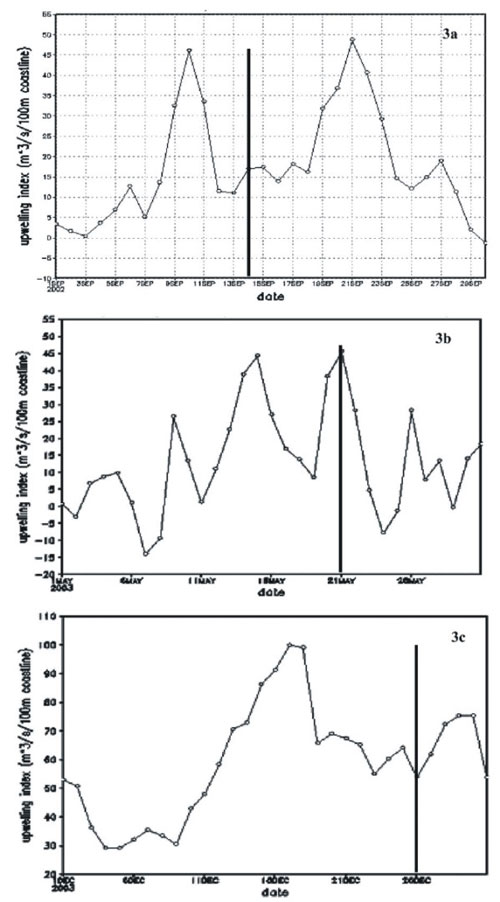From ye olde blog, May 2006: an interesting report from the BBC:
Concentrations of the natural pigment chlorophyll in coastal waters have been shown to rise prior to earthquakes.
These chlorophyll increases are due to blooms of plankton, which use the pigment to convert solar energy to chemical energy via photosynthesis.
This is based on an article by Singh et al. [doi] in Advances in Space Research, part of a special issue devoted to the use of satellite remote sensing for studying and predicting natural hazards such as earthquakes. The authors claim that you can detect a rise in sea surface temperature just before large coastal earthquakes. The blooms observed in this study are, they say, result from an increased flow of heat energy from the ocean to the atmosphere, enhancing the upwelling of cold, nutrient rich water and fuelling a boom in the growth of photosynthetic algae.
This is all very interesting, but what is unclear in the paper is the reason so much heat energy is being released prior to the earthquake, which is itself releasing accumulated strain energy. And, looking at the paper, I’m not really sure the relationship is quite as clear-cut as is claimed.
The figure below is from their paper, which shows the amount of upwelling measured at three localities in the month in which an earthquake was recorded. The peaks can be linked to increased concentrations of chlorophyll, as measured by satellite. The dark vertical lines mark the date of the earthquake.

As you can see, there are a number of peaks in each of these plots, not just the one associated with an earthquake. In all but perhaps the last case the peak preceding the earthquake doesn’t seem to have a significantly different magnitude to all the others, and the timing of the earthquake seems quite variable – in one case it coincides with the peak, in another it is ten days afterwards.
You may beg to differ, but I’m rather unconvinced by this. It seems on a par with other proposed earthquake precursors like low frequency EM fluctuations (on which there are also some papers in this issue of Space Science Research) – not only is it not clear how they work, but the supposed precursor signals are not obviously distinguishable from background. Sadly, I don’t think we’ll be using satellite data to reliably forecast earthquakes just yet.



Comments (1)